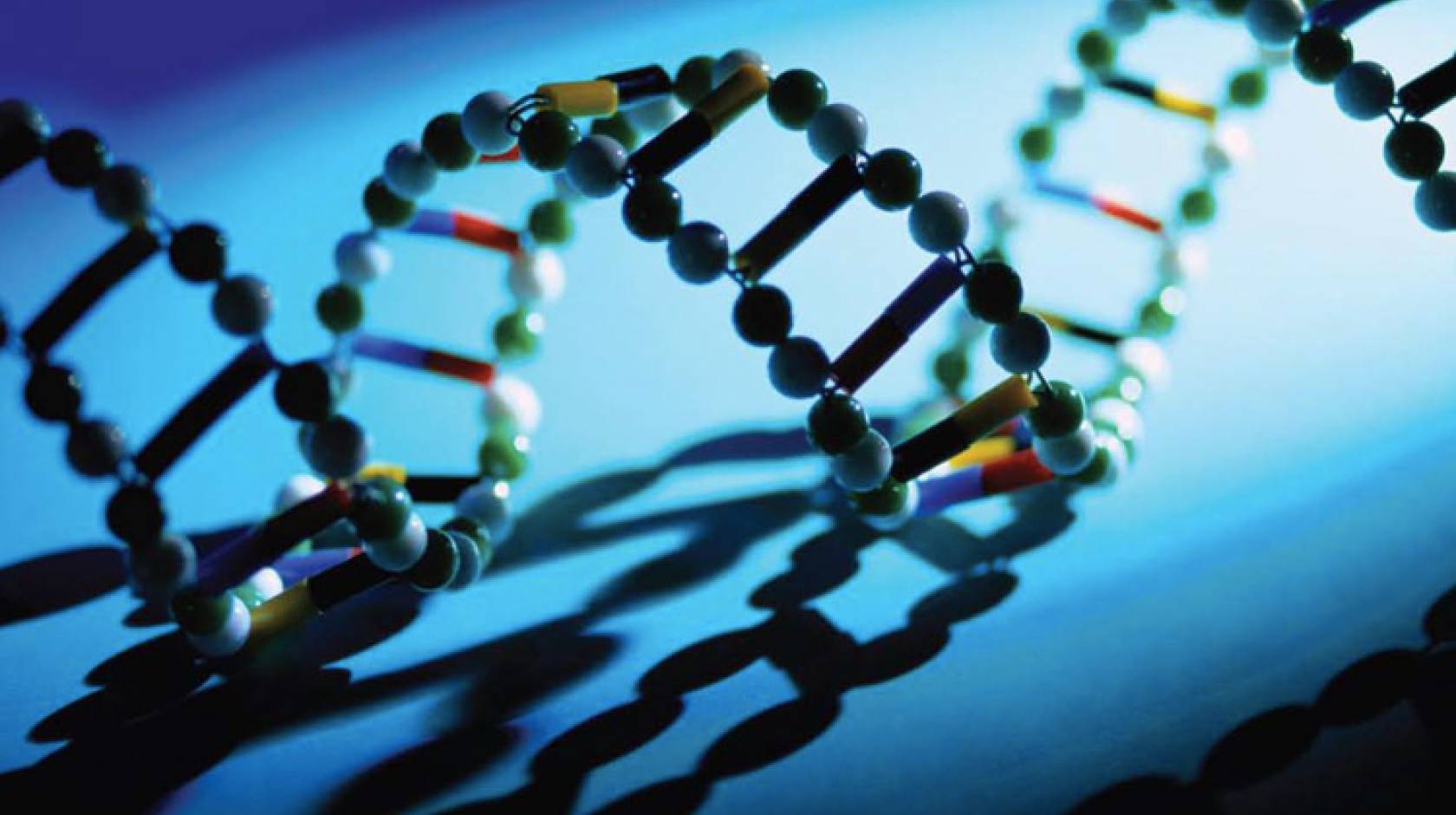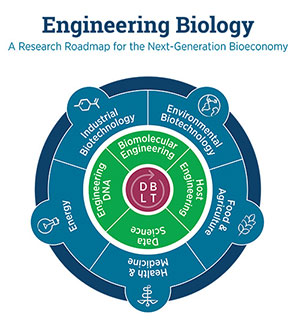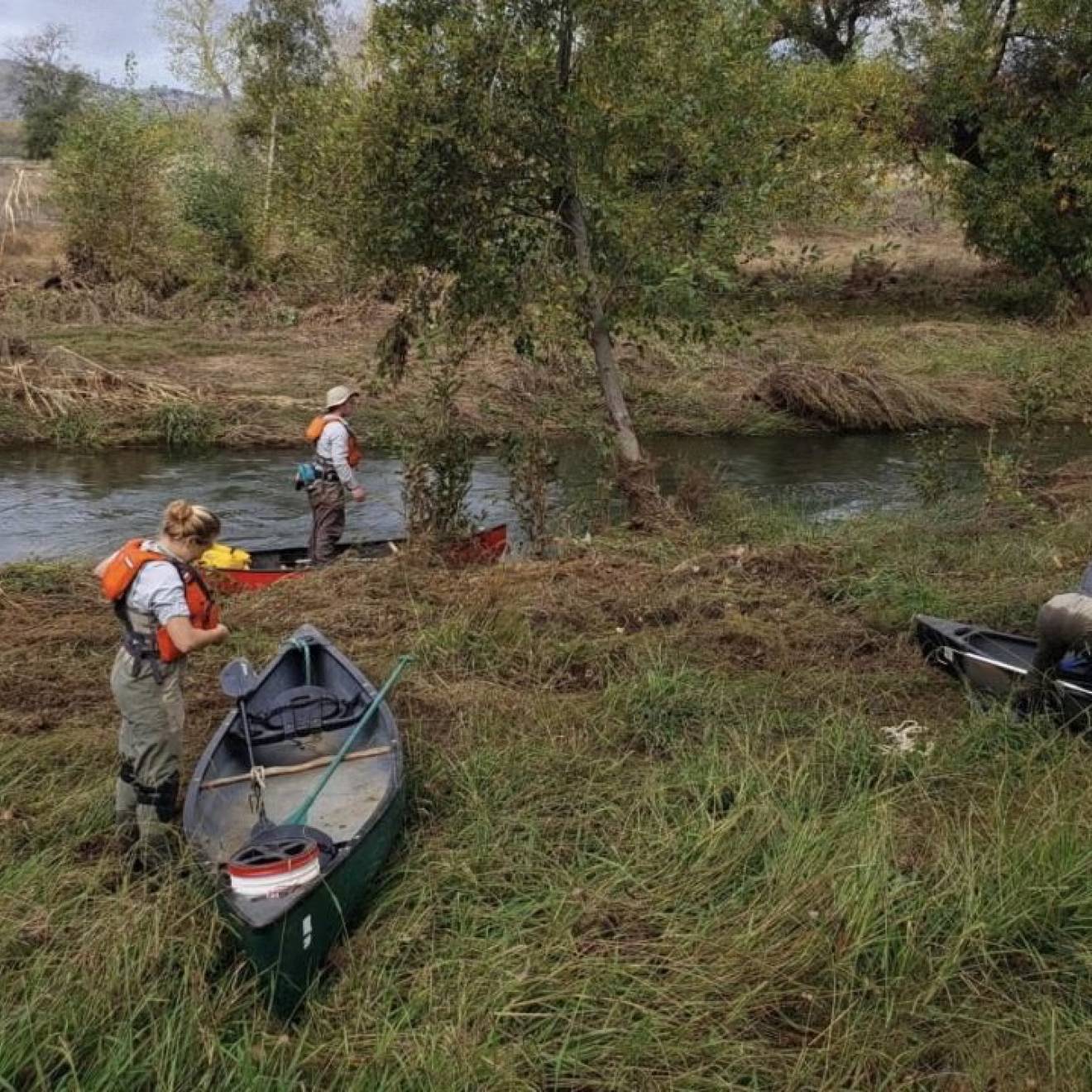Robert Sanders, UC Berkeley

Genetically engineered trees that provide fire-resistant lumber for homes. Modified organs that won’t be rejected. Synthetic microbes that monitor your gut to detect invading disease organisms and kill them before you get sick.
These are just some of the exciting advances likely to emerge from the 20-year-old field of engineering biology, or synthetic biology, which is now mature enough to provide solutions to a range of societal problems, according to a new roadmap released today (June 19) by the Engineering Biology Research Consortium, a public-private partnership partially funded by the National Science Foundation and centered at the University of California, Berkeley.
The roadmap is the work of more than 80 scientists and engineers from a range of disciplines, representing more than 30 universities and a dozen companies. While highly technical, the report provides a strong case that the federal government should invest in this area, not only to improve public health, food crops and the environment, but also to fuel the economy and maintain the country’s leadership in synthetic biology. The report comes out in advance of the year’s major technical conference for synthetic biology, 2019 Synthetic Biology: Engineering, Evolution & Design, which takes place June 23-27 in New York City.
Engineering biology/synthetic biology encompasses a broad range of current endeavors, including genetically modifying crops, engineering microbes to produce drugs, fragrances and biofuels, editing the genes of pigs and dogs using CRISPR-Cas9, and human gene therapy. But these successes are just a prelude to more complex biological engineering coming in the future, and the report lays out the opportunities and challenges, including whether or not the United States makes it a research priority.
“The question for government is, if all of these avenues are now open for biotechnology development, ‘How does the U.S. stay ahead in those developments as a country?’” said Douglas Friedman, one of the leaders of the roadmap project and executive director of the Engineering Biology Research Consortium. “This field has the ability to be truly impactful for society, and we need to identify engineering biology as a national priority, organize around that national priority and take action based on it.”
China and the United Kingdom have made engineering biology/synthetic biology — which means taking what we know about the genetics of plants and animals and then tweaking specific genes to make these organisms do new things — a cornerstone of their national research enterprise.
Following that lead, the U.S. House of Representatives held a hearing in March to discuss the Engineering Biology Research and Development Act of 2019, a bill designed to “provide for a coordinated federal research program to ensure continued United States leadership in engineering biology.” This would make engineering biology a national initiative equivalent to the country’s recent commitments to quantum information systems and nanotechnology.

“What this roadmap does and what all of our collaborators on this project have done is to imagine, over the next 20 years, where we should go with all of this work,” said Emily Aurand, who directed the roadmapping project for the EBRC. “The goal was to address how applications of the science can expand very broadly to solve societal challenges, to imagine the breadth and complexity of what we can do with biology and biological systems to make the world a better, cleaner, more exciting place.”
“This roadmap is a detailed technical guide that I believe will lead the field of synthetic biology far into the future. It is not meant to be a stagnant document, but one that will continually evolve over time in response to unexpected developments in the field and societal needs.” said Jay Keasling, a UC Berkeley professor of chemical and biomolecular engineering and the chair of EBRC’s roadmapping working group.
The roadmap would guide investment by all government agencies, including the Department of Energy, Department of Defense and National Institutes of Health as well as NSF.
“The EBRC roadmap represents a landmark achievement by the entire synthetic biology and engineering biology community,” said Theresa Good, who is the deputy division director for molecular and cellular biosciences at the National Science Foundation and co-chair of a White House-level synthetic biology interagency working group. “The roadmap is the first U.S. science community technical document that lays out a path to achieving the promise of synthetic biology and guideposts for scientists, engineers and policy makers to follow.”
Apples, meat and THC
Some products of engineering biology are already on the market: non-browning apples; an antimalarial drug produced by bacteria; corn that produces its own insecticide. One Berkeley start-up is engineering animal cells to grow meat in a dish. An Emeryville start-up is growing textiles in the lab. A UC Berkeley spin off is creating medical-quality THC and CBD, two of the main ingredients in marijuana, while another is producing brewer’s yeast that provide the hoppy taste in beer, but without the hops.
But much of this is still done on small scales; larger-scale projects lie ahead. UC Berkeley bioengineers are trying to modify microbes so that they can be grown as food or to produce medicines to help humans survive on the moon or Mars.
Others are attempting to engineer the microbiome of cows and other ruminants so that they can better digest their feed, absorb more nutrients and produce less methane, which contributes to climate change. With rising temperatures and less predictable rain, scientists are also trying to modify crops to better withstand heat, drought and saltier soil.
And how about modified microbes, seaweed or other ocean or freshwater plants — or even animals like mussels — that will naturally remove pollutants and toxins from our lakes and ocean, including oil and plastic?
“If you look back in history, scientists and engineers have learned how to routinely modify the physical world though physics and mechanical engineering, learned how to routinely modify the chemical world through chemistry and chemical engineering,” Friedman said. “The next thing to do is figure out how to utilize the biological world through modifications that can help people in a way that would otherwise not be possible. We are at the precipice of being able to do that with biology.”
While in the past some genetically engineered organisms have generated controversy, Friedman says the scientific community is committed to engaging with the public before their introduction.
“It is important that the research community, especially those thinking about consumer-facing products and technologies, talk about the ethical, legal and societal implications early and often in a way different than we have seen with biotech developments in the past,” he said.
In fact, the benefits of engineering biology are so vast that it’s an area we just cannot ignore.
“The opportunity is immense,” Friedman said.

